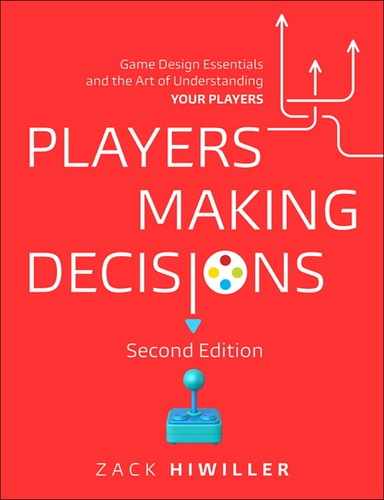Table of Contents
Responsibilities of a Game Designer
Part 2: Prototypes and Playtesting
5. Paper Prototyping Development Techniques
8. Prototypes and Intellectual Property
9. Flow and the Fundamental Game Design Directive
Less-Interesting Decision-Making
More-Interesting Decision-Making
Fairness and Mitigating Randomness
How Players Determine Game Goals
Part 4: Describing Game Elements
13. Mechanics, Dynamics, and Aesthetics (MDA)
Progression and Numeric Relationships
Features of Ineffective Puzzles
Part 5: Game Theory and Rational Decision-Making
19. Equilibria in Normal-Form Games
Solving Games Using Strict Dominance
Determining Nash Equilibria in a Larger Matrix
20. Sequential and Iterated Games
Promises and Commitment Problems
22. Marginal Decision Analysis
Part 6: Human Behavior in Games
23. Behaviorism and Schedules of Reinforcement
Ethical and Practical Concerns
24. Learning and Constructivism
What’s the Problem with Rewards?
Self-Determination Theory and Challenges
Helping with Memory Limitations
28. Documentation and Written Communication
Documentation for Tabletop Games
30. Spreadsheets for Simulation
Example: State of Mobile Games 2014
Part 8: The Game Design Business
